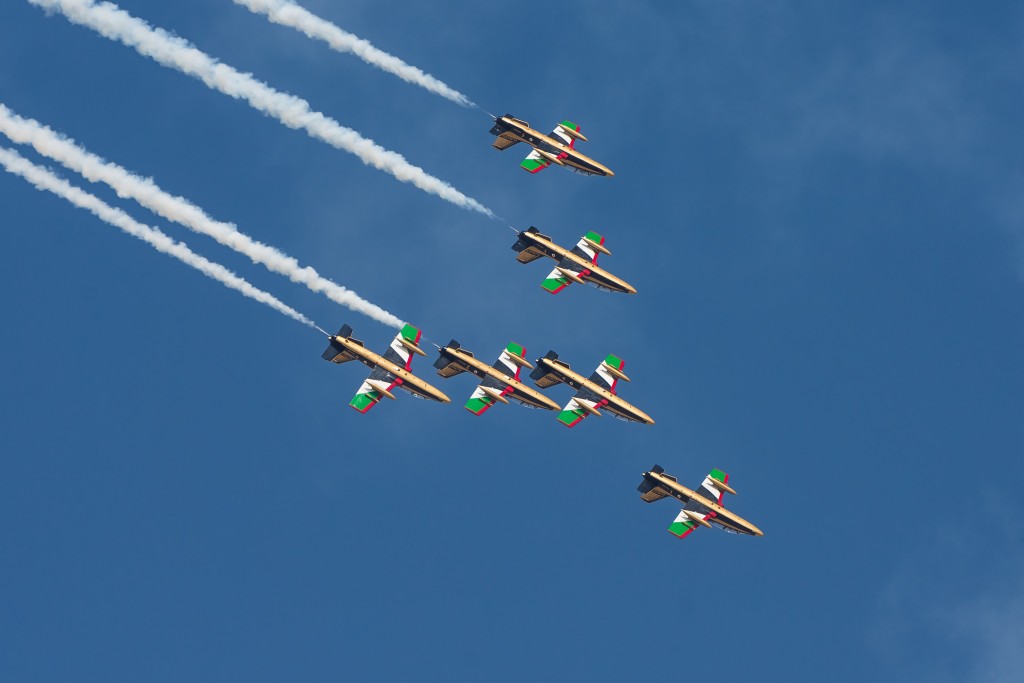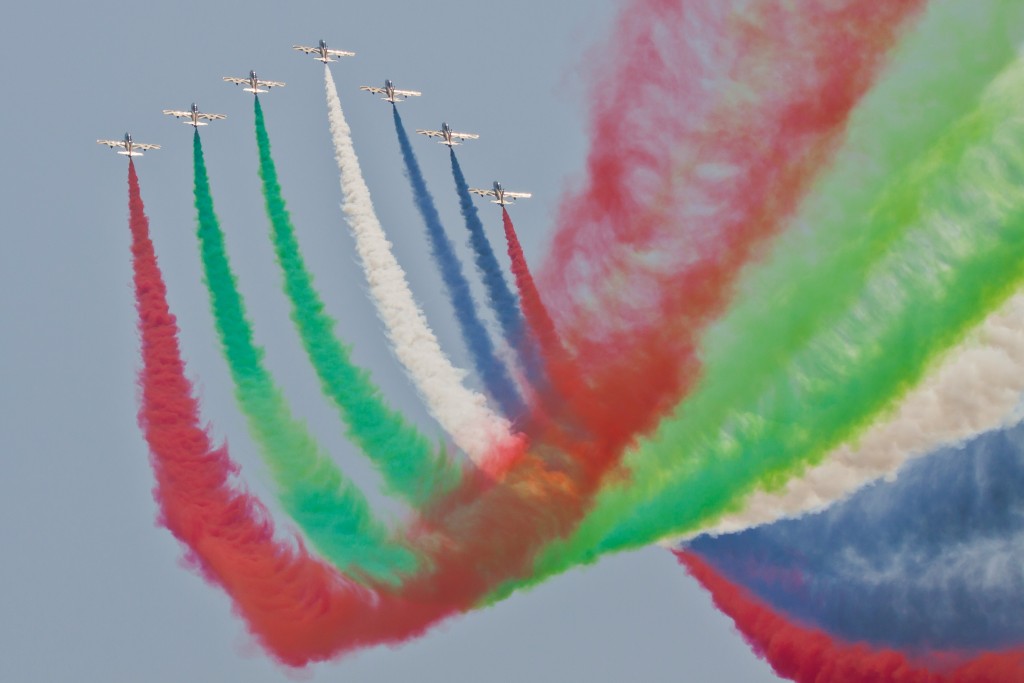The UAE’s critically-acclaimed Al Fursan aerobatic team has moved closer than ever to getting a new fleet of jets from China to replace their Aermacchi MB-339s, as the UAE reportedly signs a firm order for the Hongdu L-15 Falcon.

Photo: Peter Lawrence
According to AVIC, the aircraft’s manufacturer, the UAE has signed a contract this month to purchase 12 L-15s, with an option for 36 more. Given fact that the UAE was known to be seeking around a dozen jets to replace Al Fursan’s ten MB-339s by the middle of this decade, Al Fursan could well be the beneficieries of this initial order. The Gulf nation also needs to replenish and expand its advanced jet training fleet, which currently relies on 25 Pilatus PC-21s following the recent withdrawal of their 12 BAE Hawks.
The L-15 order does not come as a surprise, as the UAE had evaulated its suitability as a replacement for the MB-339 in 2021, and signed a Letter of Intent to buy the L-15 for an unspecified role around a year ago. However, they had also been considering a competing offer from Korea Aerospace Industries for a mix of 60 T-50 advanced jet trainers and FA-50 light attack aircraft. With a deal now inked for 12 L-15s, it seems unlikely that the UAE will order the full complement of T-50/FA-50s as proposed – and should the UAE exercise its rights for further L-15s, the chances of the T-50 flying in Emirati colours will become even slimmer.
Even if the UAE does decide to operate a mixed fleet of L-15s and T-50s, it would be most logical if the L-15 was destined for Al Fursan while the T-50 was used for flight training. This is because the T-50 has been specifically designed to train pilots for the F-16, which the UAE already operates, and the KF-X, which the UAE has expressed an interest in ordering. The L-15, being a Chinese product, may not be able to easily simulate the radar, avionics and weapon systems of aircraft built by the western and western-allied manufacturers, compromising its ability to train pilots for the UAE’s most potent front line fighters.

Photo: Tom Wittevrongel
The UAE’s ten Aermacchi MB-339A-NATs were delivered specifically to equip the newly-established Al Fursan aerobatic team when it was formed in 2010, and the Italian-built jet trainer has no other role within the UAE Air Force. However, some of those ten jets are upgraded ex-Italian Air Force airframes built in the mid-1980s, which will reach the end of their lives in 2030 – or sooner, unless upgrades are made. In recent years, the UAE has repeatedly expressed its aim to replace the MB-339 in the mid-2020s; this target date coincides with the expected entry into service of the newly-ordered L-15s in 2025 or 2026.
The Hongdu L-15 Falcon (known on the Chinese domestic market as the JL-10) is a supersonic advanced jet trainer and light combat aircraft, powered by two afterburning turbofans. It was designed with assistance from Yakovlev, and as such, it bears a strong resemblence to the Yak-130. Following its first flight in 2006, the L-15 entered Chinese service in 2013, and has also been sold to Zambia in very limited numbers. However, while its potential use by Al Fursan would put the L-15 in a very prominent position on the world stage, with a larger order from the UAE still yet to be firmed up, the L-15 is yet to see meaningful export success.